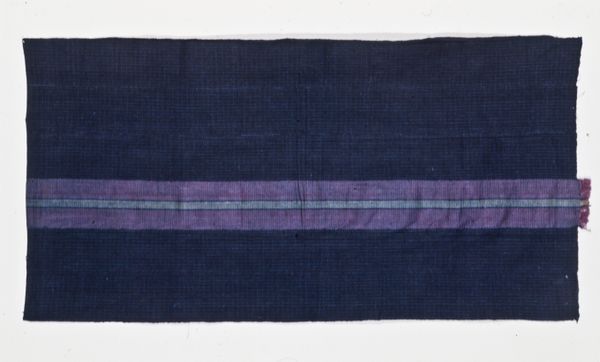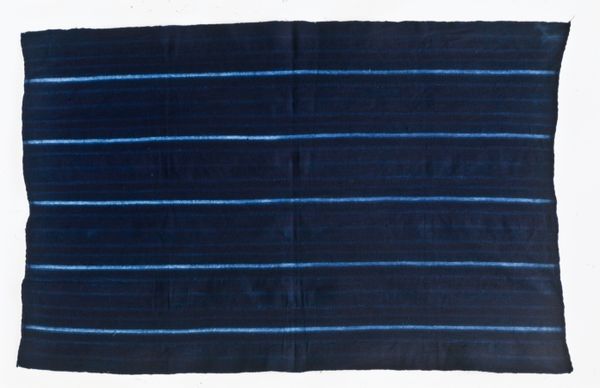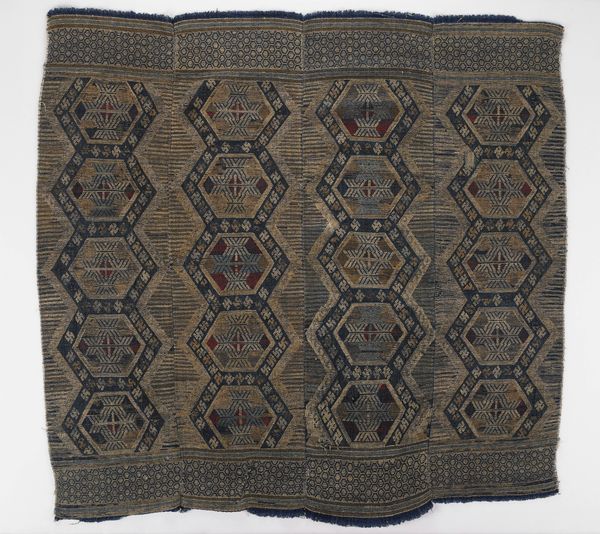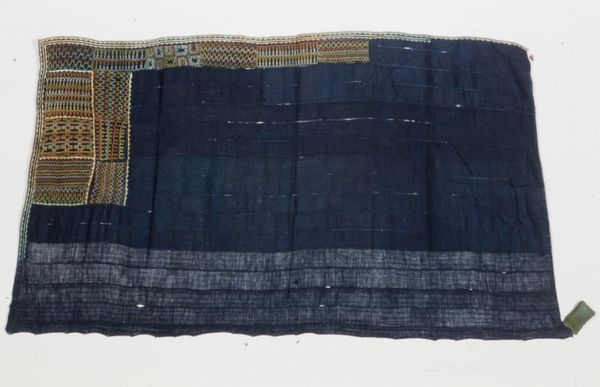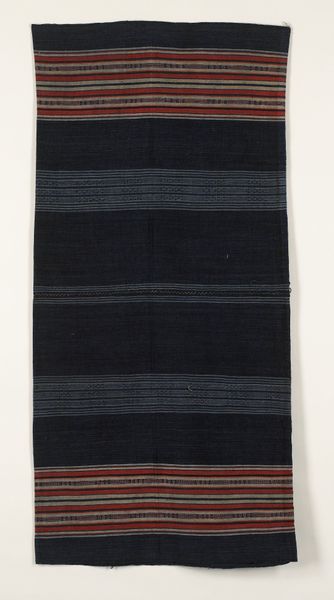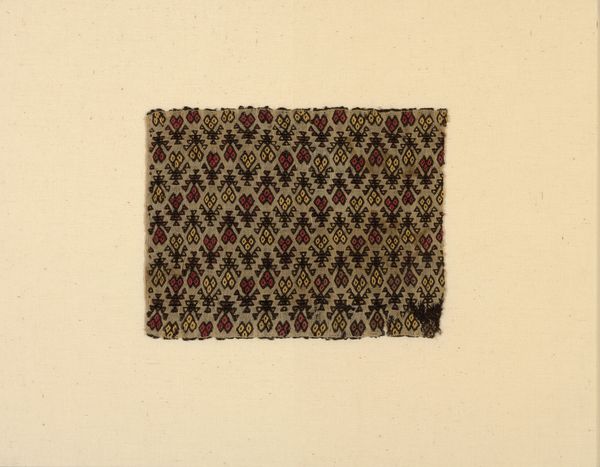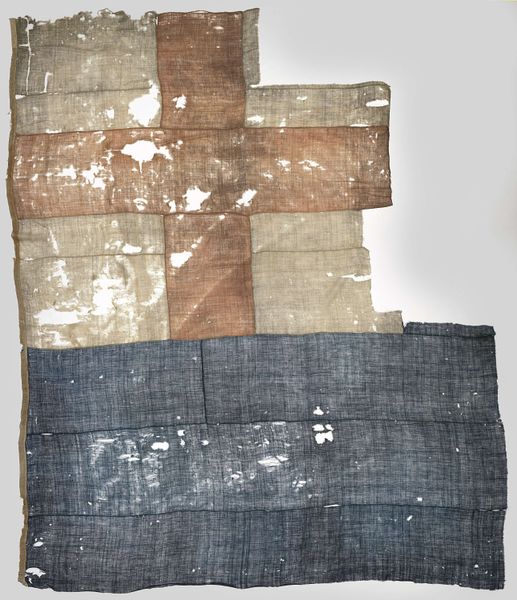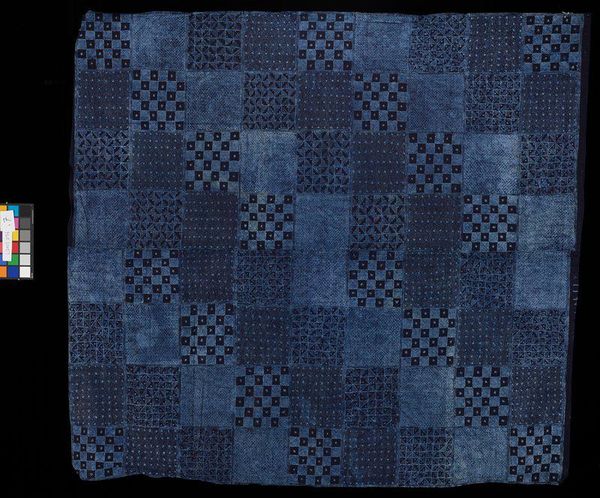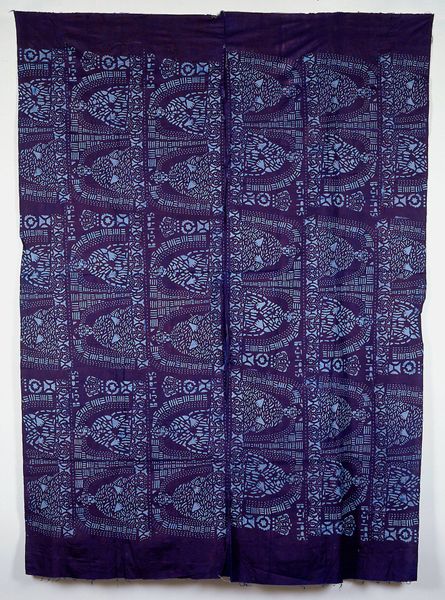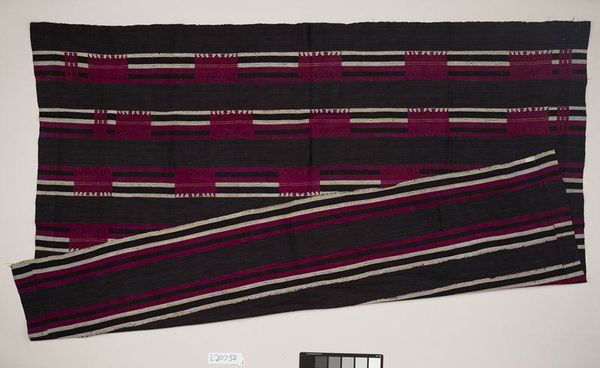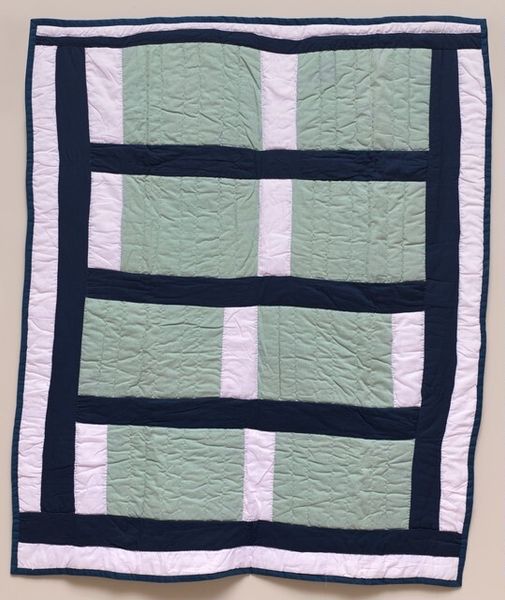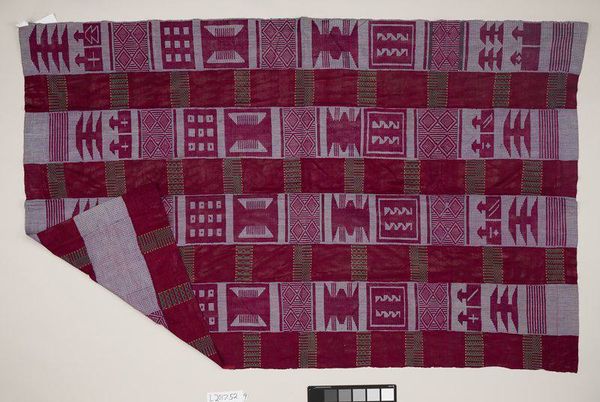
textile, cotton
#
textile
#
cotton
#
textile design
#
yoruba-art
Dimensions: 64 3/8 × 57 in. (163.51 × 144.78 cm)
Copyright: No Known Copyright
Curator: I’m immediately struck by the deep indigo hues, like gazing into a night sky just after dusk, don't you think? It’s also rather soothing and calming, very hypnotic. Editor: Indeed, this is an *Adire ohiko*, a tie-dyed panel created by a Yoruba artist, probably sometime in the 20th century. It’s part of the textile collection here at the Minneapolis Institute of Art. What captivates me is how such simple materials – cotton, dye, and human ingenuity – can produce such a complex visual language. Curator: Language is the right word! Each repeated block almost feels like a hieroglyph, you know, containing secret information. It really is hard to imagine someone crafting the exact, same panel of indigo over and over. A unique and gorgeous snowflake from mother earth! Editor: The repetition is key, I think. Within Yoruba culture, Adire textiles aren’t just decoration; they’re imbued with social and historical meaning. The patterns often tell stories, convey proverbs, or denote status, as cultural markers. These blocks could represent anything from kinship to philosophical concepts. Curator: It’s wild, isn't it? This unassuming cloth connecting us to the intimate, collective experiences of women living perhaps a century ago. The imperfection in that repetition actually gives it an intense intimacy. Flawed and human-made... It is rather profound. Editor: The 'tie-dye' aspect is important, too. Think about what it represents: resistance. The binding and knotting off of the fabric – a physical barrier deliberately placed to determine the dye's dispersion – to achieve an image of wholeness. And not every attempt would have been as perfect as this beautiful one. There are stories in these intentional choices of color placement! Curator: Like the push and pull of the moon with the tide! Well, all that resistance created such stunning harmony in the final product. I think it serves as a poignant visual for our own life challenges and the hidden beauty that often blooms afterward. Editor: Yes, art gives us symbols and a language to process our emotional experiences! When we choose to acknowledge its profound potential as cultural carrier, objects take on a special life. Curator: Here’s hoping that through its textures, patterns, and meanings, this particular Adire continues whispering those stories to future generations. Editor: I hope this artful dance of symbols resonates long after our listeners have left this hall.
Comments
No comments
Be the first to comment and join the conversation on the ultimate creative platform.

